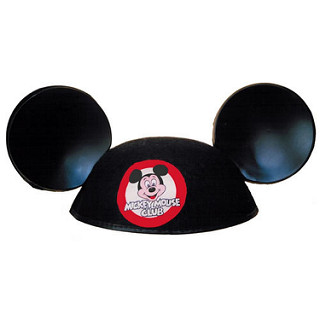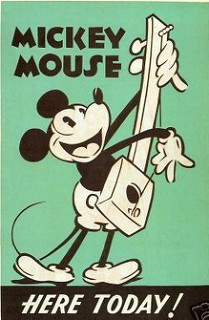The Importance of Film Ratings
The birth of cinema in the late 1880s created a new issue for every government – how would films be regulated? Film ratings began as a necessary and strict procedure, and over time has morphed into something more complicated and secretive, while allowing filmmakers to create what they want. This has allowed parents to keep protect their children from inappropriate content without infringing on anyone’s freedom of speech, which has become an important aspect of film in modern society. The Motion Picture Association of America states on their website that they take pride in their “longstanding and continued commitment to the First Amendment” (“Preserving Free Speech”). It is valuable to know how the rating system came to be, who rates movies today, and the controversy surrounding the system.
Before the Classification and Ratings System (CARA) came to be, the Motion Picture Association of America (MPAA) was created. The founder, William Hays, formed the Hays Code, which was used to deem if movies were suitable to be distributed based on a list of requirements. His code did not exactly have the impact or authority Hays wanted it to, but that changed in 1934 when the American Bishops of the Roman Catholic Church organized The Legion of Decency and began to speak out about what they found unacceptable in cinema. The code was strict; scenes that did not uphold the sanctity of marriage were banned, as well as anything remotely sexually suggestive (“The History of Hollywood”). All this was inspired by the Supreme Court case Mutual v. Ohio Industrial Commision, in which the Supreme Court made the decision that freedom of speech did not apply to films, and therefore they could be censored. They reversed this decision in 1952, saying that “expression by means of motion pictures is included within the free speech and free press guaranty” (Blitz). That decision was vital to the reworking of the rating system and cinema as a whole. Jack Valenti became president of the MPAA in 1966 and created a new and innovative rating system for films (“Why: History of Ratings”). The different ratings were G for General Audiences, M for Mature Audiences (later changed to PG), R for Restricted (anyone under the age of 17 would not be let in without a parent) and X (no admittance for people under the age of 17, later changed to NC-17). The rating M was changed because of the confusing nature of the term “Mature Audiences” (Blitz). The rating PG-13 was later added in the mid 80’s, as a response to the amount of gore in movies like Gremlins and Indiana Jones and the Temple of Doom.

Red Dawn was the first movie to be released with the PG-13 rating (“The History of Hollywood”). The goal is now to inform the public about the nature of the film, while allowing filmmakers to express themselves as they please.
The way ratings were given has changed over the years as well. It has evolved into an enigmatic, secretive organization called the Classification and Ratings Administration, also referred to as CARA (Baker). The chairperson, who makes the executive decisions and holds all responsibility, is appointed by the chairperson of the MPAA and the President of NATO (National Association of Theatre Owners). Along with the chairman is the Administrative Director (determined by the chairperson). The next highest positions are the senior raters, who have “demonstrated experience and judgement in the rating of motion pictures,” then raters, who serve up to seven years and are meant to represent the diversity of American parents (Classification and Rating Rules). The names of people on the board are not disclosed to the public, and have to meet a certain set of requirements to be on the board. For instance, when they join they need to have a child between the ages of five and 15, and they are booted out of office once all their children are over 21. They also cannot have any connection to the film industry. The administration is funded exclusively by the fees paid to them by filmmakers and producers to have their films reviewed (Baker). One of the few film raters to ever speak publically about their term on the board was Richard Heffner, who died in 2013. He was the chairperson of the board after Jack Valenti, although being apprehensive about the position. He was known for being more concerned with violence than sexual content, introducing the NC-17 rating to accommodate for films with extreme violence. The PG-13 rating was also established during his time on the board (Saperstein). The current rating board undisputedly has a large amount of power and impact on the film industry, in contrast to earlier forms of the board.
The MPAA rating system is often criticized. Many have accused the board of being more and more lenient of violence, and instead basing ratings on sexuality or language. Others contend that CARA is not being lenient enough. Joan Graves, head of the MPAA’s rating board, said: “The criticism of our system is not coming from the parents, who are the people we’re doing this for” (“MPAA Defends”). The system of rating and appointing people to the board is questionable, though. It is within the MPAA’s best interest to appoint someone as chairperson of CARA who will, in turn, appoint raters that will be more lenient, especially on R and NC-17 ratings. Filmmakers also have access to the identities of the senior raters, so they can can easily persuade or find ways to get lower ratings on their films (Wilmoth). A flawless example of this is the movie Blue Valentine (2010). The movie was originally rated NC-17 for an oral sex scene between the two main characters, but director Weinstein fought it, and the rating was adjusted to an R, despite the fact that no changes were made to the film (“15 Times”). The current rating system has clear flaws, but remember that there is no way to rate movies without controversy arising.
The process of rating films is a long, complicated, and mysterious one, but understanding where they come from is useful for everyone. Cinema has advanced over time and the classification and rating system has had to expand along with it, creating the administration that exists today. In Josh Wilmoths review of the current rating scale, he creates a perfect description of it, saying: “the system is an excellent compromise between government-regulated censorship of the film industry and allowing children to have easy access to movies that contain content that their parents would not consider age-appropriate” (Wilmoth). Even with all the arguments against it, the system will continue to grow and become more useful in the future.
Sources:
“15 Times the MPAA Got It Wrong.” IndieWire, Penkse Business Media, LLC., 7 Oct. 2014, www.indiewire.com/2014/10/15-times-the-mpaa-got-it-wrong-69310/. Accessed 24 Apr. 2017.
Baker, Craig S. “How Do Movies Get Their Ratings?” Mental Floss, 10 July 2014, mentalfloss.com/article/57664/how-do-movies-get-their-ratings. Accessed 24 Apr. 2017.
Blitz, Matt. “A Brief History of the Movie Rating System.” Gizmodo, 30 Dec. 2014, gizmodo.com/a-brief-history-of-the-movie-rating-system-1676334900. Accessed 28 Apr. 2017.
Classification and Rating Rules, Motion Picture Association of America, Inc., 2010.
“The History of Hollywood Censorship and the Ratings System.” FilmmakerIQcom, filmmakeriq.com/lessons/the-history-of-hollywood-censorship-and-the-ratings-system/. Accessed 24 Apr. 2017.
“MPAA Defends Rating System.” Entertainment Weekly, Time Inc., 14 Nov. 2013, ew.com/article/2013/11/14/mpaa-ratings/. Accessed 24 Apr. 2017.
“Preserving Free Speech.” Motion Picture Association of America. N.p., n.d. Web. 05 May 2017.
Saperstein, Pat. “Richard Heffner, Longtime Head of Ratings Board, Dies at 88.” Variety, 20 Dec. 2013, variety.com/2013/film/news/richard-heffner-longtime-head-of-ratings-board-dies-at-88-1200981102/. Accessed 24 Apr. 2017.
“Why: History of Ratings.” The Classification & Rating Administration (CARA), Motion Picture Association of America, filmratings.com/why.html. Accessed 25 Apr. 2017.
Wilmoth, Josh. “How the MPAA Movie Rating Scale Fails Our Children.” ReelRundown, 27 Dec. 2016, reelrundown.com/film-industry/Is-the-MPAA-Rating-Scale-Enough. Accessed 24 Apr. 2017.










